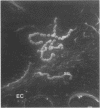Abstract
Streptococcus uberis commonly causes bovine mastitis; however, the pathogenesis of this infection is poorly understood. In this study, the ability of S. uberis to invade mammary epithelial cells in culture was investigated. Two strains of S. uberis isolated from bovine mammary secretions were capable of invading bovine mammary epithelial cells in vitro at different levels, suggesting strain differences in invasiveness. Invasion required microfilaments but not microtubular cytoskeletal elements. No morphological changes in epithelial cells were observed for up to 24 h postinfection, suggesting no cellular injury. Strains of S. uberis evaluated were genetically distinct and differed phenotypically in expression of potential virulence factors. Whether a single factor or combination of factors was responsible for differences in invasiveness was not addressed in this study. These data provide a foundation for a better understanding of the processes used by S. uberis to invade epithelial cells. Epithelial cell invasion may be a potentially important mechanism in the pathogenesis of S. uberis mastitis.
Full text
PDF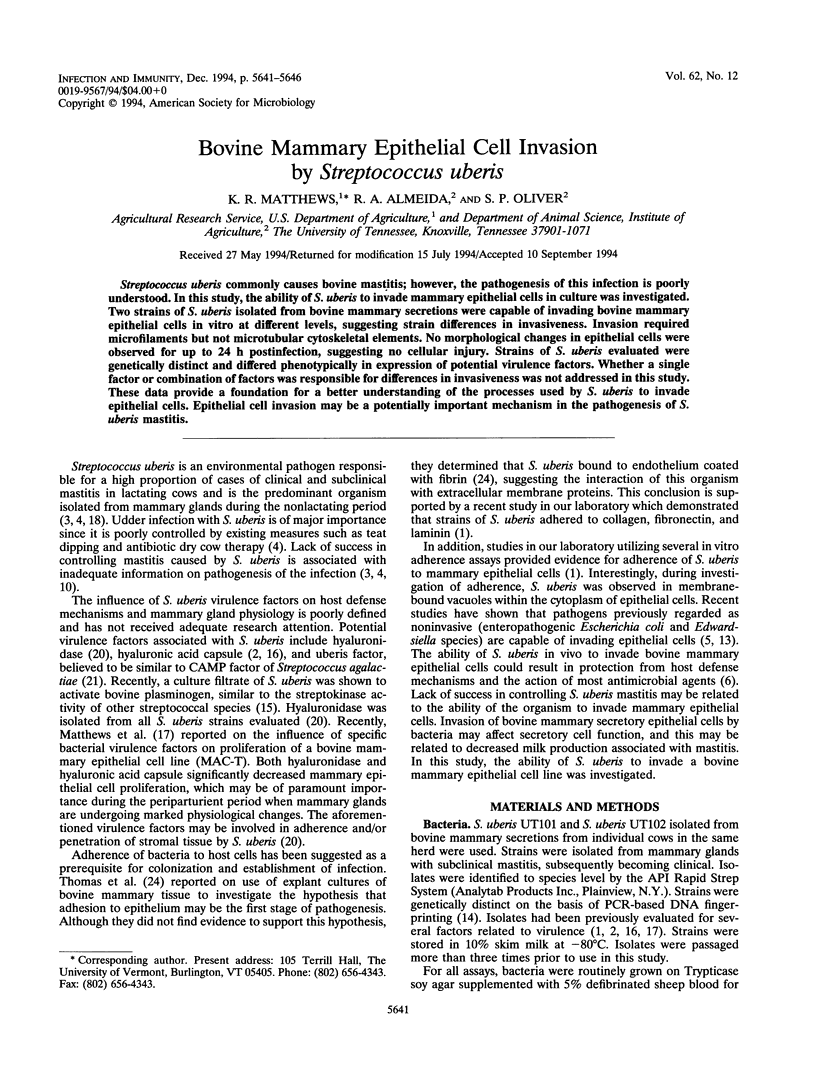
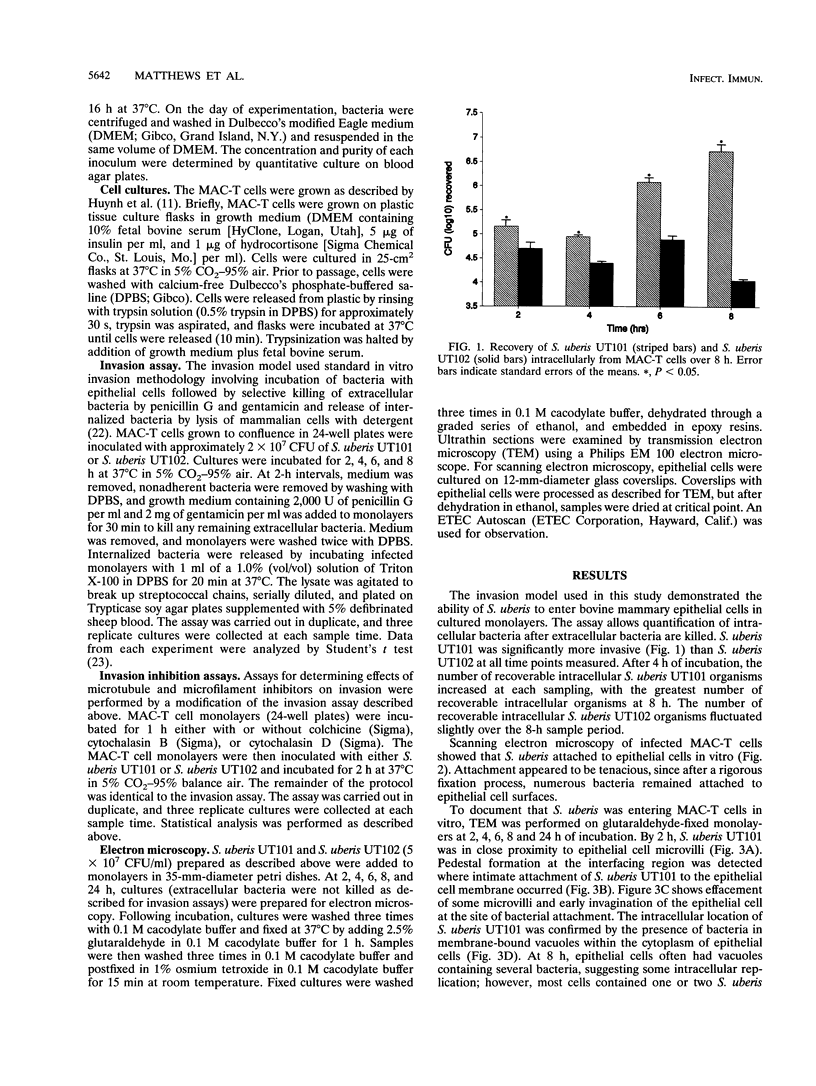
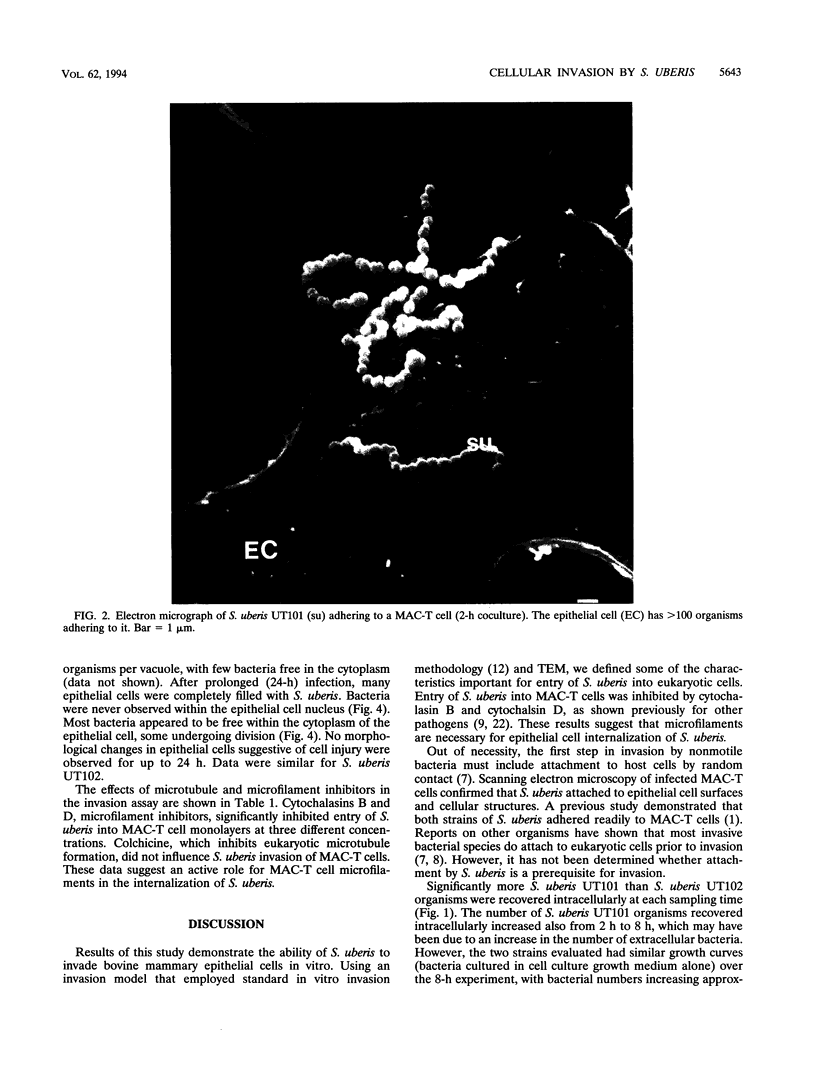

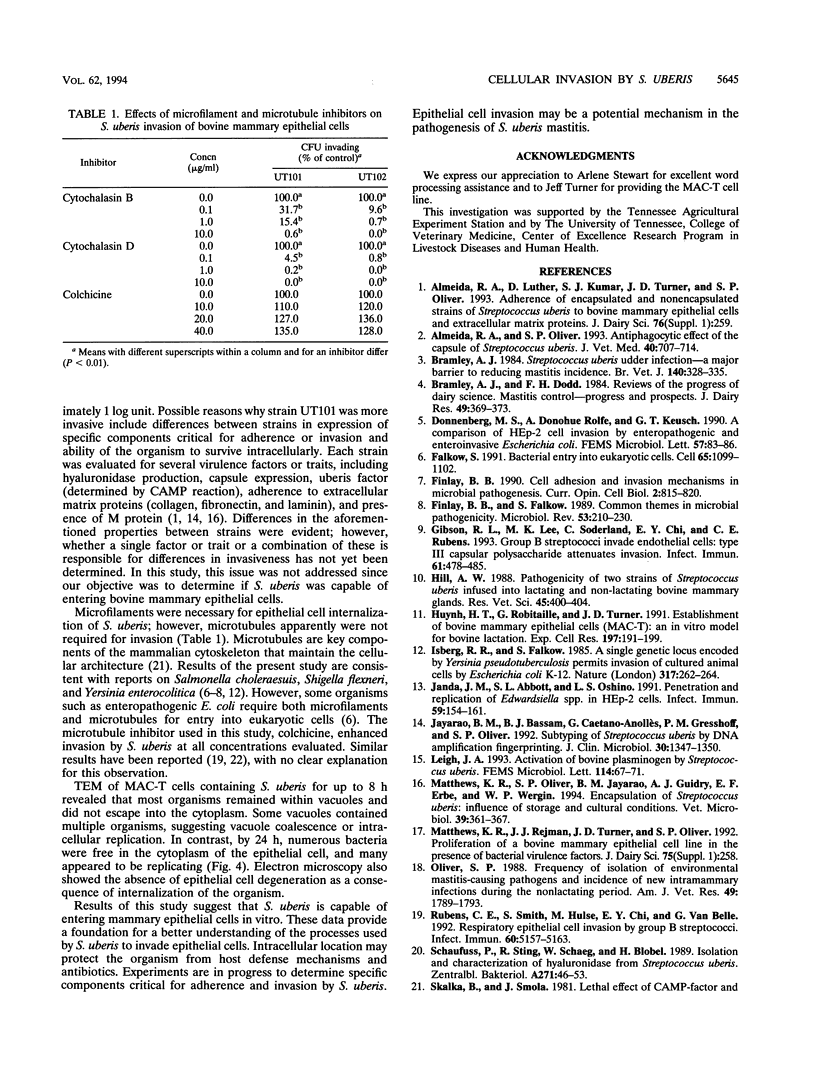
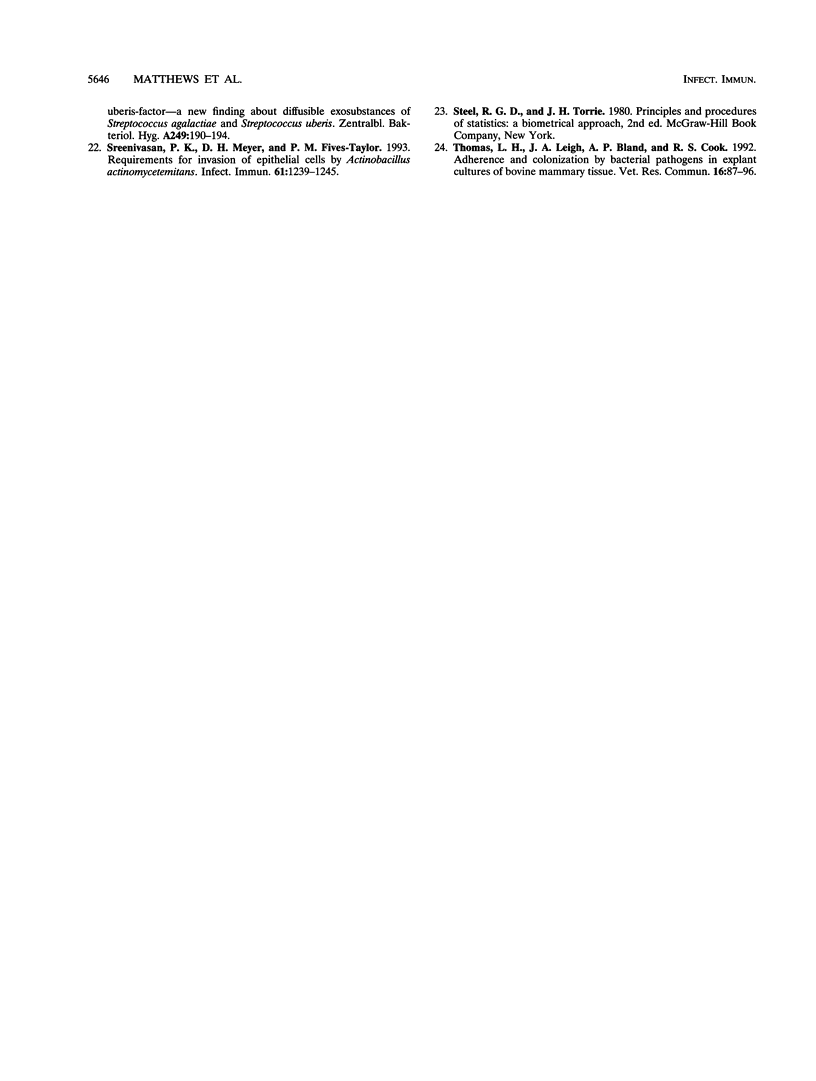
Images in this article
Selected References
These references are in PubMed. This may not be the complete list of references from this article.
- Almeida R. A., Oliver S. P. Antiphagocytic effect of the capsule of Streptococcus uberis. Zentralbl Veterinarmed B. 1993 Dec;40(9-10):707–714. doi: 10.1111/j.1439-0450.1993.tb00195.x. [DOI] [PubMed] [Google Scholar]
- Bramley A. J. Sources of Streptococcus uberis in the dairy herd. I. Isolation from bovine faeces and from straw bedding of cattle. J Dairy Res. 1982 Aug;49(3):369–373. doi: 10.1017/s0022029900022500. [DOI] [PubMed] [Google Scholar]
- Bramley A. J. Streptococcus uberis udder infection--a major barrier to reducing mastitis incidence. Br Vet J. 1984 Jul-Aug;140(4):328–335. doi: 10.1016/0007-1935(84)90122-2. [DOI] [PubMed] [Google Scholar]
- Donnenberg M. S., Donohue-Rolfe A., Keusch G. T. A comparison of HEp-2 cell invasion by enteropathogenic and enteroinvasive Escherichia coli. FEMS Microbiol Lett. 1990 May;57(1-2):83–86. doi: 10.1016/0378-1097(90)90417-o. [DOI] [PubMed] [Google Scholar]
- Falkow S. Bacterial entry into eukaryotic cells. Cell. 1991 Jun 28;65(7):1099–1102. doi: 10.1016/0092-8674(91)90003-h. [DOI] [PubMed] [Google Scholar]
- Finlay B. B. Cell adhesion and invasion mechanisms in microbial pathogenesis. Curr Opin Cell Biol. 1990 Oct;2(5):815–820. doi: 10.1016/0955-0674(90)90078-s. [DOI] [PubMed] [Google Scholar]
- Finlay B. B., Falkow S. Common themes in microbial pathogenicity. Microbiol Rev. 1989 Jun;53(2):210–230. doi: 10.1128/mr.53.2.210-230.1989. [DOI] [PMC free article] [PubMed] [Google Scholar]
- Gibson R. L., Lee M. K., Soderland C., Chi E. Y., Rubens C. E. Group B streptococci invade endothelial cells: type III capsular polysaccharide attenuates invasion. Infect Immun. 1993 Feb;61(2):478–485. doi: 10.1128/iai.61.2.478-485.1993. [DOI] [PMC free article] [PubMed] [Google Scholar]
- Hill A. W. Pathogenicity of two strains of Streptococcus uberis infused into lactating and non-lactating bovine mammary glands. Res Vet Sci. 1988 Nov;45(3):400–404. [PubMed] [Google Scholar]
- Huynh H. T., Robitaille G., Turner J. D. Establishment of bovine mammary epithelial cells (MAC-T): an in vitro model for bovine lactation. Exp Cell Res. 1991 Dec;197(2):191–199. doi: 10.1016/0014-4827(91)90422-q. [DOI] [PubMed] [Google Scholar]
- Isberg R. R., Falkow S. A single genetic locus encoded by Yersinia pseudotuberculosis permits invasion of cultured animal cells by Escherichia coli K-12. Nature. 1985 Sep 19;317(6034):262–264. doi: 10.1038/317262a0. [DOI] [PubMed] [Google Scholar]
- Janda J. M., Abbott S. L., Oshiro L. S. Penetration and replication of Edwardsiella spp. in HEp-2 cells. Infect Immun. 1991 Jan;59(1):154–161. doi: 10.1128/iai.59.1.154-161.1991. [DOI] [PMC free article] [PubMed] [Google Scholar]
- Jayarao B. M., Bassam B. J., Caetano-Anollés G., Gresshoff P. M., Oliver S. P. Subtyping of Streptococcus uberis by DNA amplification fingerprinting. J Clin Microbiol. 1992 May;30(5):1347–1350. doi: 10.1128/jcm.30.5.1347-1350.1992. [DOI] [PMC free article] [PubMed] [Google Scholar]
- Leigh J. A. Activation of bovine plasminogen by Streptococcus uberis. FEMS Microbiol Lett. 1993 Nov 15;114(1):67–71. doi: 10.1111/j.1574-6968.1993.tb06552.x. [DOI] [PubMed] [Google Scholar]
- Matthews K. R., Jayarao B. M., Guidry A. J., Erbe E. F., Wergin W. P., Oliver S. P. Encapsulation of Streptococcus uberis: influence of storage and cultural conditions. Vet Microbiol. 1994 Apr;39(3-4):361–367. doi: 10.1016/0378-1135(94)90171-6. [DOI] [PubMed] [Google Scholar]
- Oliver S. P. Frequency of isolation of environmental mastitis-causing pathogens and incidence of new intramammary infection during the nonlactating period. Am J Vet Res. 1988 Nov;49(11):1789–1793. [PubMed] [Google Scholar]
- Rubens C. E., Smith S., Hulse M., Chi E. Y., van Belle G. Respiratory epithelial cell invasion by group B streptococci. Infect Immun. 1992 Dec;60(12):5157–5163. doi: 10.1128/iai.60.12.5157-5163.1992. [DOI] [PMC free article] [PubMed] [Google Scholar]
- Schaufuss P., Sting R., Schaeg W., Blobel H. Isolation and characterization of hyaluronidase from Streptococcus uberis. Zentralbl Bakteriol. 1989 May;271(1):46–53. doi: 10.1016/s0934-8840(89)80052-0. [DOI] [PubMed] [Google Scholar]
- Sreenivasan P. K., Meyer D. H., Fives-Taylor P. M. Requirements for invasion of epithelial cells by Actinobacillus actinomycetemcomitans. Infect Immun. 1993 Apr;61(4):1239–1245. doi: 10.1128/iai.61.4.1239-1245.1993. [DOI] [PMC free article] [PubMed] [Google Scholar]
- Thomas L. H., Leigh J. A., Bland A. P., Cook R. S. Adherence and colonization by bacterial pathogens in explant cultures of bovine mammary tissue. Vet Res Commun. 1992;16(2):87–96. doi: 10.1007/BF01839005. [DOI] [PMC free article] [PubMed] [Google Scholar]



